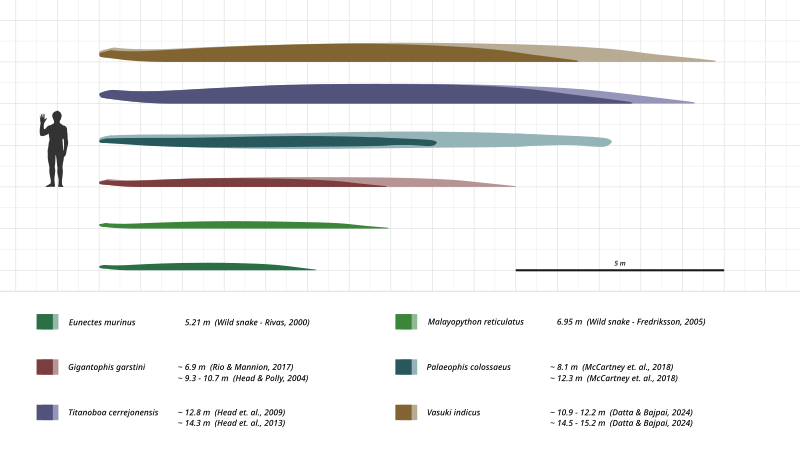קובץ:Eunectes-murinus -Broghammerus-reticulatus- -Titanoboa-2.svg

גודל התצוגה המקדימה הזאת מסוג PNG של קובץ ה־SVG הזה: 800 × 267 פיקסלים. רזולוציות אחרות: 320 × 107 פיקסלים | 640 × 213 פיקסלים | 1,024 × 341 פיקסלים | 1,280 × 427 פיקסלים | 2,560 × 853 פיקסלים | 1,440 × 480 פיקסלים.
לקובץ המקורי (קובץ SVG, הגודל המקורי: 1,440 × 480 פיקסלים, גודל הקובץ: 182 ק"ב)
היסטוריית הקובץ
ניתן ללחוץ על תאריך/שעה כדי לראות את הקובץ כפי שנראה באותו זמן.
| תאריך/שעה | תמונה ממוזערת | ממדים | משתמש | הערה | |
|---|---|---|---|---|---|
| נוכחית | 13:55, 24 באפריל 2019 | 480 × 1,440 (182 ק"ב) | Steveoc 86 | Typo - 14.9 to 14.3 | |
| 23:52, 22 באפריל 2019 | 480 × 1,440 (182 ק"ב) | Steveoc 86 | Update diagram, add grid, add colours, and add Gigantophis. | ||
| 15:32, 5 במאי 2018 | 346 × 1,631 (16 ק"ב) | Oryctolagus XL | . | ||
| 23:34, 1 במאי 2018 | 214 × 1,600 (16 ק"ב) | Oryctolagus XL | Softer shapes and better head for the python. | ||
| 00:49, 30 באפריל 2018 | 231 × 1,590 (28 ק"ב) | Oryctolagus XL | User created page with UploadWizard |
שימוש בקובץ
הדפים הבאים משתמשים בקובץ הזה:
שימוש גלובלי בקובץ
אתרי הוויקי השונים הבאים משתמשים בקובץ זה:
- שימוש באתר ca.wikipedia.org
- שימוש באתר cs.wikipedia.org
- שימוש באתר en.wikipedia.org
- שימוש באתר hu.wikipedia.org
- שימוש באתר it.wikipedia.org
- שימוש באתר ja.wikipedia.org
- שימוש באתר ml.wikipedia.org
- שימוש באתר nl.wikipedia.org
- שימוש באתר pt.wikipedia.org
- שימוש באתר th.wikipedia.org
- שימוש באתר tr.wikipedia.org
- שימוש באתר www.wikidata.org
- שימוש באתר zh.wikipedia.org
